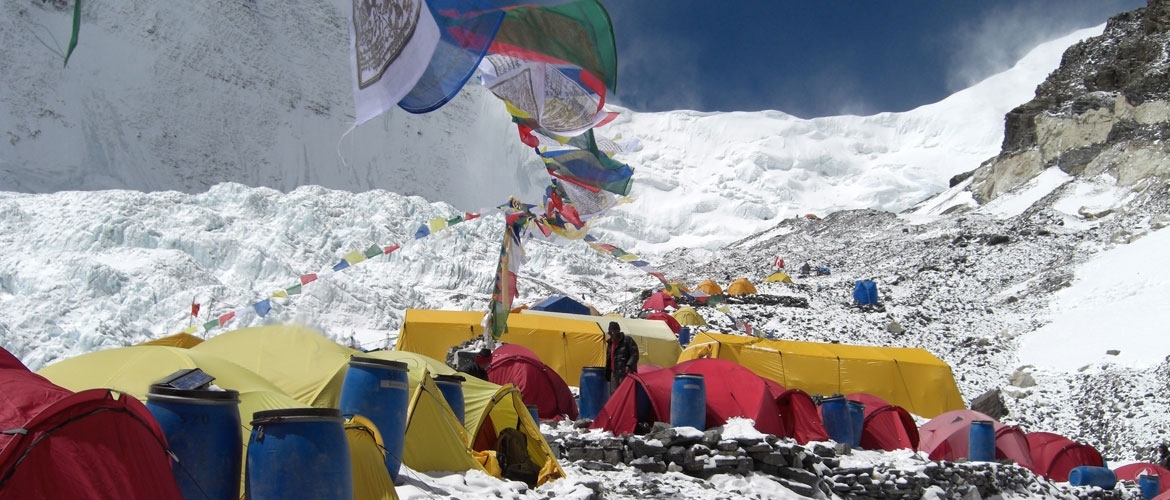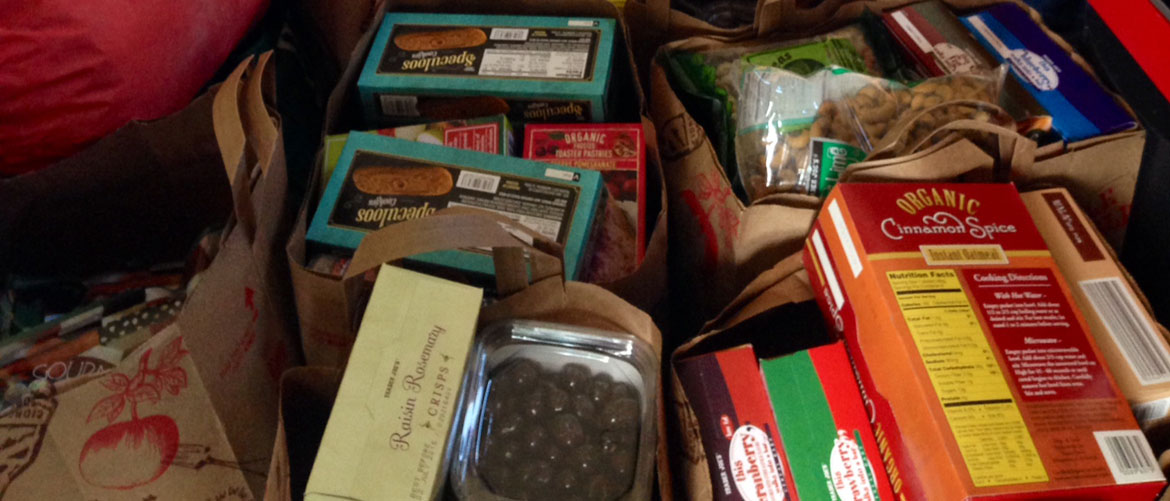Food on Everest: What to Eat and How it Gets to the Mountain


What do climbers eat on Everest?
Food is fuel for up to two months on the world’s tallest mountain. What food does the Alpenglow team bring, how does it get to Everest, and who cooks it? After watching bag after bag and box after box get stuffed to the brim with snacks, I asked Alpenglow lead guide Adrian how he plans and prepares food for a big mountain expedition – specifically Everest.

How do you food shop for Everest?
The shopping happens in two parts. Alpenglow imports hundreds of pounds of food from the US and Spain. Adrian spends an afternoon at Trader Joes in the US, stocking up on nuts, dry fruits, crackers, and snacks. Monica Piris, Alpenglow Expeditions doctor, ships meats, Manchego cheese, olive oil, Serrano ham, chocolate, and almonds from Spain. Alpenglow has a local kitchen staff who cook for almost 30 people (guides, climbers, Sherpa, other staff) in two kitchens that are set up in Base Camp. Over a month before the guides and climbers arrive, the kitchen staff begins planning, buying, and packaging food for the whole season. Because Base Camp is on a glacier, the ice acts as a natural refrigerator and allows the kitchen staff to use fresh, local ingredients for meals.
Above Base Camp, Alpenglow uses lightweight, mostly imported foods and the climbers and guides cook together. The team snacks a lot, eating small amounts of calories all day. The Alpenglow team brings crackers, meats, cheese, granola, nuts, and fruits. Up high, “people say to eat 8,000 – 10,000 calories per day which is 5 times what you burn at home. We eat as much as we can to combat big days. As you go higher, properly cooking things becomes harder, so we pick things that cook well and we use a camp stove” says Adrian.
How does digestion work at altitude?
Your body prioritizes giving blood to essential organs (your brain and cardiovascular system) and not to digestion. It becomes harder to digest, so you want simple foods like carbs and sugars that break down easily – not protein. The Alpenglow crew eats the majority of their protein in Base Camp.
What are some of your [Adrian] favorite foods?
Stoked Roasters coffee; Mark Jane’s Farm organic dehydrated food; snacks from Trader Joes; Justin’s nut butter; Speculoos cookies; and chocolate!
Snacks: bring your own or provided?
As you go higher it’s nice to have stuff you know you can eat. Team members are encouraged to bring snacks. They often trained with certain foods and know how it works with their system.
How much should Everest climbers eat a day?
Eat as much as you can. You traditionally lose 10-15% of body fat on Everest. The Alpenglow team loses less than that because less time is spent at altitude due to pre-expedition training with our Rapid Ascent program.
How does the food get to Base Camp?
It’s driven by truck from Kathmandu to Tingri and then driven by Jeep to Base Camp. It’s then carried by yak to advanced Base Camp.
What do you drink?
“Tequila and coffee” jokes Adrian. “You can bring treats – like boxed wine for dinner, the occasional beer, Coca Cola.” Stoked Roasters donates coffee to Alpenglow because Everest climbers and guides LOVE coffee.
How do you get water?
In Base Camp, two Alpenglow local staff members have the sole job of chipping clean ice from the glacier to melt for drinking, cooking, cleaning, and bathing water for the entire team. At Advanced Base Camp, all the water is melted from ice and there is always a hot thermos so everyone can have tea, hot chocolate, or coffee. At upper camps, the climbers and guides work together melting clean snow for water. It takes 3-4 hours a day for a team of two people to collect and melt the water they’ll need that day.